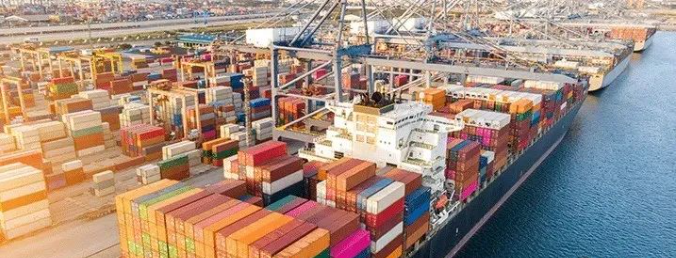Since November 19th, the Yemeni Housai armed forces have launched continuous attacks on Israeli ships passing through the Red Sea region, seriously disrupting the normal operation of global shipping and causing chaos in the global freight supply chain. Exporters are eager to find alternative air, land, and sea routes to ensure timely delivery of various goods to retailers. To address the challenges posed by the interruption of the Red Sea route and ensure the stability of the supply chain.
The interruption of this route has affected the main trade route connecting Europe, North America, and Asia - the Suez Canal, along with another major waterway, the Panama Canal, which has long queues due to drought. The cost of container transportation on ocean routes has skyrocketed, and in some cases has more than doubled.

Standard&Poor's Global warned in a report that if the supply interruption time is prolonged, the consumer goods industry supplying to top retailers in the world such as Wal Mart and IKEA will face the greatest impact.
Alan Baer, CEO of American logistics company OL USA, suggested that shipping and logistics customers need to be prepared for at least 90 days of Red Sea transportation interruptions, and pointed out that everything will remain calm until January 2nd during the Christmas holiday, but there will be a frenzy afterwards.
However, Jan Kleine Lasthues, CEO of Air Transport at Hermann Logistics, a globally renowned freight forwarder, said that some fast-moving companies are already trying to switch to multimodal transportation. The company has found that some clothing, electronics, and technology industries are interested in the intermodal mode of air and sea transportation. One option is to first send the goods by sea to the port in Dubai, where they are then transported by plane to their destination.
However, Paul Brashier, Vice President of Short Term and Intermodal Transportation at ITS Logistics, a supply chain group, pointed out that cost is the main constraint on this alternative solution. Companies transporting urgent or critical items may choose air freight, but it ultimately cannot be a comprehensive solution.
Brian Bourke, Global Chief Business Officer of SEKO Logistics, stated that the cost of air transportation is approximately 5-15 times higher than that of sea transportation. But if the time for goods to be shelved doubles, more shippers will have no choice but to turn to air freight, especially high-value goods such as branded clothing and high-end electronic products. He claimed to have received inquiries from some clients.
Corey Ranslem, CEO of British maritime risk consulting and security company Dryad Global, stated that approximately 35000 ships cross the Red Sea each year to transport goods between Europe, the Middle East, and Asia, accounting for approximately 10% of global GDP. American retailers such as Wal Mart, Target, Macy's and Nike all rely on this route to transport goods. It added that under the threat of long-term shutdown, the prices of fuel and goods entering Europe will significantly increase, and in addition to the increased cost of detouring through Africa, the transit time may increase by about 30 days depending on the arrival port.
At the same time, the shipping industry does not have 100% confidence in America's Prosperity Guardian program. A source pointed out that it is still unknown whether the US led maritime forces can prevent more attacks and ensure the safety of the route.
MORE>>
MORE>>
MORE>>
MORE>>
